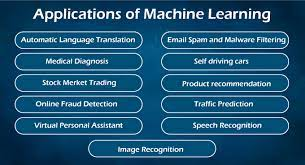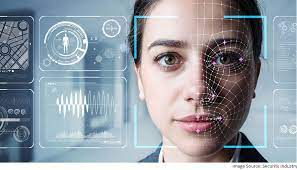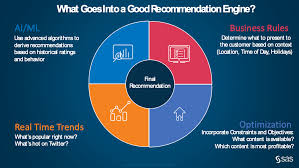Senior High Category : Understanding Machine Learning Basics - (Simplified version)
Introduction to Machine Learning
1 - Understand the definition and significance of machine learning.2 - Learn about the different types of machine learning (supervised, unsupervised,
3 - Explore real-world applications of machine learning, such as image recognition and
Machine learning can be understood in basic and simple terms as a type of technology that enables computers or systems to learn and improve from data without being explicitly programmed. It's like teaching a computer to learn from examples and make predictions or decisions based on that learning.
In traditional programming, humans provide specific instructions to computers to perform tasks. However, with machine learning, we provide data to a computer and let it figure out patterns or rules by itself. The computer analyzes the data, discovers relationships or trends, and uses that knowledge to make predictions or take actions in similar situations.
The significance of machine learning lies in its ability to automate complex tasks and make accurate predictions or decisions. It allows computers to handle large amounts of data and extract meaningful insights from it. Machine learning is used in various fields, such as healthcare, finance, marketing, and more, to solve problems, optimize processes, and improve decision-making.
For example, in healthcare, machine learning can analyze patient data to predict the likelihood of a disease, helping doctors make early diagnoses. In finance, machine learning models can analyze market data to predict stock prices or detect fraudulent transactions. In marketing, it can analyze customer behavior to personalize recommendations or target specific audiences.
In summary, machine learning is a technology that enables computers to learn from data, discover patterns, and make predictions or decisions. Its significance lies in its ability to automate tasks, extract insights from data, and improve processes in various fields.
II - different types of machine learning - supervised, unsupervised
Supervised Learning: Supervised learning is like having a teacher guide you through a task. In supervised learning, we have a dataset where each example (or observation) is labeled with the correct answer. The goal is to train a machine learning model to learn the patterns in the labeled data so that it can predict the correct answer for new, unseen examples.
Think of it as a teacher showing you a series of pictures of animals and telling you what each animal is. The teacher provides the labels (correct answers) for each picture, and you learn to recognize different animals based on those examples. Once you've learned, the teacher will show you new pictures, and you can predict the correct animal without the teacher's help.
Unsupervised Learning: Unsupervised learning is like exploring a new territory without a guide. In unsupervised learning, we have a dataset without any predefined labels or answers. The goal is to find patterns, structures, or relationships within the data without explicit guidance.
For example, imagine you're given a pile of puzzle pieces without an image of the completed puzzle. In unsupervised learning, your task is to group the puzzle pieces based on their shapes, colors, or any other patterns you observe. You explore the data without any predefined labels and try to uncover interesting insights or clusters.
In summary, supervised learning is about learning from labeled examples with predefined answers, while unsupervised learning focuses on discovering patterns and structures in data without predefined labels or answers.
III - Real-world applications of machine learning
Here are some basic and simple explanations of real-world applications of machine learning:
Spam Filtering: Machine learning is used in email systems to filter out spam messages from your inbox. The machine learning model learns from labeled examples of spam and non-spam emails and uses that knowledge to classify incoming emails as either spam or not spam. It helps reduce the amount of unwanted emails you receive.
Voice Recognition: Voice assistants like Siri, Google Assistant, and Amazon Alexa use machine learning to understand and recognize spoken commands. Machine learning algorithms analyze speech patterns and learn to interpret different words and phrases, enabling the voice assistants to respond accurately to user queries and perform tasks.
Recommendation Systems: Have you ever noticed how Netflix suggests movies or shows you might like? Recommendation systems use machine learning to analyze your viewing history and preferences, as well as those of similar users. Based on this information, the system predicts your preferences and recommends personalized content that you are likely to enjoy.
Image Recognition: Machine learning plays a significant role in image recognition applications. For example, facial recognition technology uses machine learning algorithms to identify and verify individuals based on facial features. This technology is used for tasks like unlocking smartphones, tagging people on social media, and enhancing security systems.
Predictive Maintenance: In industries like manufacturing and transportation, machine learning is used for predictive maintenance. By analyzing sensor data from machines and vehicles, machine learning models can identify patterns and anomalies that indicate potential failures. This allows companies to schedule maintenance proactively, reducing downtime and improving efficiency.
Fraud Detection: Banks and financial institutions employ machine learning for fraud detection. By analyzing transactional data and user behavior patterns, machine learning models can identify unusual or fraudulent activities. These models can detect fraudulent credit card transactions, suspicious account behavior, or identity theft attempts, helping protect users and businesses from financial losses.
Medical Diagnosis: Machine learning is used in medical applications to assist in diagnosing diseases and conditions. By analyzing patient data, medical imaging, and electronic health records, machine learning models can help identify patterns and markers that indicate specific diseases or predict outcomes. This can aid doctors in making more accurate diagnoses and treatment decisions.
These are just a few examples of the wide range of applications of machine learning in various industries. Machine learning is continuously evolving and finding new applications in areas such as self-driving cars, natural language processing, recommendation systems, and more.











